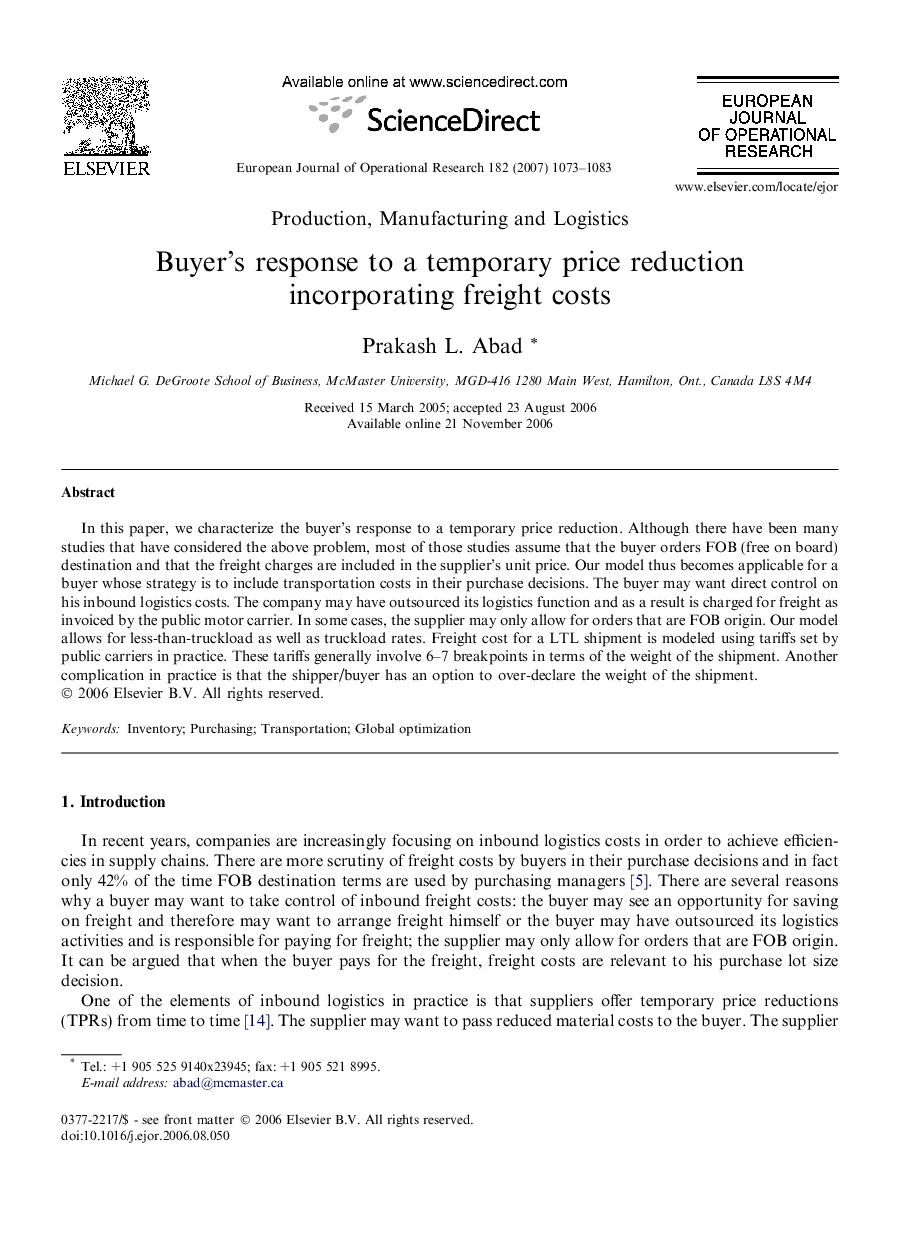| Article ID | Journal | Published Year | Pages | File Type |
|---|---|---|---|---|
| 482982 | European Journal of Operational Research | 2007 | 11 Pages |
In this paper, we characterize the buyer’s response to a temporary price reduction. Although there have been many studies that have considered the above problem, most of those studies assume that the buyer orders FOB (free on board) destination and that the freight charges are included in the supplier’s unit price. Our model thus becomes applicable for a buyer whose strategy is to include transportation costs in their purchase decisions. The buyer may want direct control on his inbound logistics costs. The company may have outsourced its logistics function and as a result is charged for freight as invoiced by the public motor carrier. In some cases, the supplier may only allow for orders that are FOB origin. Our model allows for less-than-truckload as well as truckload rates. Freight cost for a LTL shipment is modeled using tariffs set by public carriers in practice. These tariffs generally involve 6–7 breakpoints in terms of the weight of the shipment. Another complication in practice is that the shipper/buyer has an option to over-declare the weight of the shipment.
